Salomonen |
|
|
|
| Übersicht – Contents: | |
Salomonen |
|
|
|
| Übersicht – Contents: | |
Flaggen – Flags: |
|
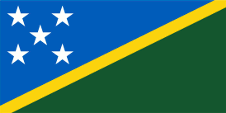 |
National- und Staatsflagge – national and state flag, Seitenverhältnis – ratio = 1:2, Quelle/Source, nach/by: Wikipedia (EN), Flags of the World   |
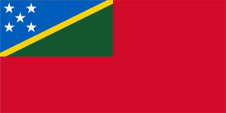 |
Handelsflagge – merchant flag, Seitenverhältnis – ratio = 1:2, Quelle/Source, nach/by: Flags of the World |
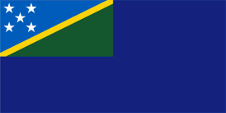 |
Staatsflagge zur See – state flag at sea, Seitenverhältnis – ratio = 1:2, Quelle/Source, nach/by: Flags of the World |
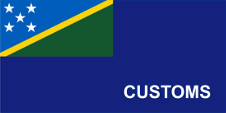 |
Zollflagge – customs flag, Seitenverhältnis – ratio = 1:2, Quelle/Source, nach/by: Flags of the World |
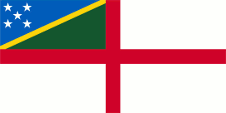 |
Marineflagge – naval flag, von Polizeikräften verwendet – used by police forces, Seitenverhältnis – ratio = 1:2, Quelle/Source, nach/by: Flags of the World |
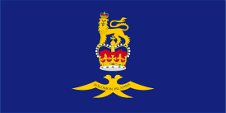 |
Flagge des Generalgouverneurs – flag of the Governor General, Seitenverhältnis – ratio = 1:2, Quelle/Source, nach/by: Flags of the World |
historische Flaggen – historical Flags: |
|
 |
1893–1977, |
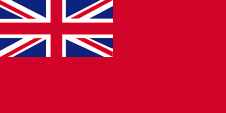 |
1893–1977, |
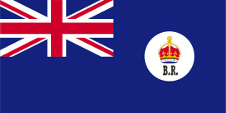 |
ca. 1902–1947, Brit. Solomon Islands Protectorate, Flagge des Britischen Resident Commissioner – flag of the British Resident Commissioner, Seitenverhältnis – ratio = 1:2, Quelle/Source, nach/by: Flags of the World |
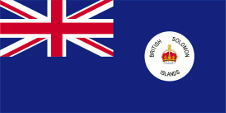 |
1906–1947, Brit. Solomon Islands Protectorate, Flagge der Regierung (Staatsflagge) – flag of the government (state flag), Seitenverhältnis – ratio = 1:2, Quelle/Source, nach/by: Flags of the World |
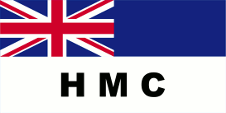 |
1907–1960, Flagge des Zolls – customs flag, Seitenverhältnis – ratio 1:2, Quelle/Source, nach/by: Flags of the World |
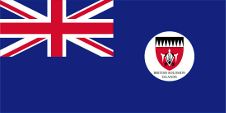 |
1947–1956, Brit. Solomon Islands Protectorate, Flagge der Regierung (Staatsflagge) – flag of the government (state flag), Seitenverhältnis – ratio = 1:2, Quelle/Source, nach/by: Flags of the World |
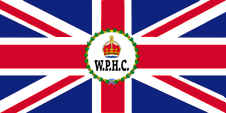 |
1905–1953, Brit. Solomon Islands Protectorate, Flagge des Hohen Kommissars für den Westpazifik – flag of Western Pacific High Commissioner, Seitenverhältnis – ratio = 1:2, Quelle/Source, nach/by: Flags of the World |
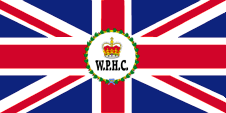 |
1953–1976, Brit. Solomon Islands Protectorate, Flagge des Hohen Kommissars für den Westpazifik – flag of Western Pacific High Commissioner, Seitenverhältnis – ratio = 1:2, Quelle/Source, nach/by: Flags of the World |
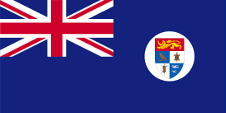 |
1956–1966, Brit. Solomon Islands Protectorate, Flagge der Regierung (Staatsflagge) – flag of the government (state flag), Seitenverhältnis – ratio = 1:2, Quelle/Source, nach/by: Flags of the World |
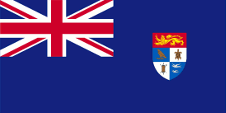 |
1966–1977, Brit. Solomon Islands Protectorate, Flagge der Regierung (Staatsflagge) – flag of the government (state flag), Seitenverhältnis – ratio = 1:2, Quelle/Source, nach/by: Wikipedia (EN), Flags of the World |
| Die heutige Flagge der Salomonen wurde am 18.11.1977 offiziell eingeführt, mehr als acht Monate vor der Unabhängigkeit. Sie zeigt einen gelben Diagonalstreifen von links unten nach rechts oben. Er teilt die Flagge in eine blaue, obere und eine grüne, untere Hälfte. In der Oberecke (im blauen Feld) fünf weiße fünfzackige Sterne. Die Farbe Blau steht für den Ozean, Grün für das Land und seine üppige Vegetation und Gelb steht für die Sonne. Die fünf Sterne repräsentieren die ursprünglichen fünf Distrikte des Landes: Ostdistrikt, Westdistrikt, Malaita, Zentraldistrikt und Östliche Äußere Inseln. | The
today’s flag of the Solomons was officially introduced on 18th of November
in 1977, more then eight month before the independence. It shows an yellow
diagonal stripe from left below to right above. It divides the flag in a
blue upper and a green lower half. In the upper staff quadrant (in the blue
field) five white five-pointed stars. The colour blue stands for the ocean, green for the country and its abundant vegetation and yellow stands for the sun. The five stars represent the pristine five districts of the country: Eastem, Western, Malaita, Central and Eastem Outer Islands. |
| Die Farben der Flagge scheinen nicht exakt als Farbtöne definiert zu sein. Die Salomonen folgen aber dem Britischen Ensign-System und Fotos der Flagge lassen zusätzlich vermuten, dass hier die Regelungen der Vorschrift des Britischen Verteidigungsministeriums "Flags of all Nations" beachtet werden. So wären anzunehmen: Blau = Mittelblau = Pantone 300, Gelb = Tiefgelb = Pantone 116, Grün = Tartangrün = Pantone 357, Dunkelblau = Königsblau = Pantone 280, Rot = Pantone 186. | The colours of the flag do not seem to be exactly defined as shades. However, the Solomon Islands follow the British Ensign System and photos of the flag additionally suggest that the regulations of the British Ministry of Defence "Flags of all Nations" are observed here. Thus one would assume: Blue = Intermediate Blue = Pantone 300, Yellow = Deep Yellow = Pantone 116, Green = Tartan Green = Pantone 357, Dark Blue = Royal Blue = Pantone 280, Red = Pantone 186. |
| Die Handelsflagge der Salomonen ist ein sogenannter "Red Ensign", mit der Nationalflagge in der Oberecke. Die Staatsflagge der Salomonen ist ein sogenannter "Blue Ensign", mit der Nationalflagge in der Oberecke. Die Marineflagge der Salomonen ist ein sogenannter "White Ensign", mit der Nationalflagge in der Oberecke und einem durchgehenden roten Georgskreuz. | The merchant flag of the Solomons is a so named "Red Ensign", with the national flag in the upper staff quadrant. The state flag of the Solomons is a so named "Blue Ensign", with the national flag in the upper staff quadrant. The naval flag of the Solomons is a so named "White Ensign", with the national flag in the upper staff quadrant and an uninterrupted red Cross of St. George. |
| Mit diesem Flaggen-Prinzip orientieren sich die Salomonen am britschen Ensign-System. Das weißt auf die früheren kolonialen Verbindungen zu Großbritannien hin. | With this flag principle the Solomons are orientated in the British Ensign-System. This points to the former colonial connexions to United Kingdom. |
Großbritannien hatte in Jahr 1864 ein Flaggensystem eingeführt, in dem:
Seit 1865 durften Schiffe von Kolonialregierungen einen Blue Ensign mit einem Badge (Abzeichen) im fliegenden Ende führen. Die jeweiligen Regierungen sollten entsprechene Bagdes zur Verfügung stellen. Handelsschiffe und seefahrende Privatpersonen aus Kolonien dürfen nur dann einen Red Ensign mit Badge führen, wenn von der britischen Admiralität eine entsprechende Erlaubnis für die Kolonie erteilt wurde. Die Salomonen hatten in ihrer Kolonialzeit keinen Red Ensign. |
United Kingdom introduced a flag system in 1864 in which:
Since 1865 ships of colonial governments were permitted to fly the Blue Ensign with a badge in the flying end of the flag. The respective governments were asked to design appropriate badges. Merchant ships and seafaring persons from colonies were only permitted to use the Red Ensign with a badge, then also named Civil Ensign, if permission has been given to the respective colony by the British admiralty. The Solomons had in their colonial times no Red Ensign. |
| Ein solches Badge war oft eine auf einer Scheibe platzierte regionale landschaftliche Darstellung, zeigte oft Schiffe, historische Begebenheiten oder konnte auch nur eine Art Logo sein. Sehr oft zeigte ein Badge zusätzlich den Namen des Landes oder auch einen Wahlspruch. Einige Besitzungen hatten aber auch schon von Anfang an ein Wappen, bzw. erhielten über die Jahre eine eigenes Wappen und das Badge wurde abgeschafft. Um ein weitgehend einheitliches Erscheinungsbild im fliegenden Ende der Flaggen zu gewährleisten, wurden Wappen und auch andere Symbole auf einer weißen Scheibe in der Größe der früheren Badges dargestellt. Es gab hier aber auch Ausnahmen, denn einige Kolonien verwendeten diese weiße Scheibe nicht, und platzierten ihr Wappen oder auch nur das Wappenschild - manchmal auch vergrößert - direkt auf das Flaggentuch. Schon in den 40-er Jahre wurde dazu übergegangen die weiße Scheibe zu entfernen und das Wappen direkt zu platzieren oder vergrößert dazustellen. Dieser Umstellungsprozess erfolgte allmählich, nirgendwo gleichzeitig und vollständig. In einigen britischen Besitzungen sind bis heute Flaggen mit der weißen Scheibe in Gebrauch, in anderen nicht mehr und in einigen Gebieten gibt es beide Varianten nebeneinander. | Such a
badge was often a regional landscape representation placed on a disk, often
showing ships, historical events or even a kind of a logo. Very often, a
badge also showed the name of the country or a motto.
Some British possessions, however, already had a coat of arms from the beginning, or their badge was replaced by a coat of arms over the years. To ensure a uniform appearance in the flying end of the flags, coats of arms and other symbols were displayed on a white disk in the size of the earlier badges. There were also exceptions, because some colonies did not use the white disk and placed their escutcheon or even coat of arms directly on the bunting, sometimes enlarged. Already in the '40s they started to remove the white disk and placed the coat of arms directly or enlarged. This conversion process was done gradually, nowhere at the same time and completely. In some British possessions, flags with the white disc are still in use, in others no more and in some areas are both variants in use, next to each other. |
| Das erste Badge der Salomonen wurde im Jahre 1906 eingeführt, und innerhalb einer weißen Scheibe im fliegenden Ende eines britischen Blue Ensign (Nationalflagge) verwendet. Dieses Badge zeigte eine Tudor-Krone und eine kreisförmige Inschrift: "British Solomon Islands". | The first
badge of the Solomons was introduced in the year 1906 and used within a
white disk in the flying end of a British Blue Ensign (national flag). This badge showed a Tudor crown and a circular inscription: "British Solomon Islands". |
| Im Jahre 1947 wurde ein neues Badge (Wappen) eingeführt. Es zeigte einen roten Schild mit Schildkröte und im Schildhaupt schwarze und weiße Dreiecke. | In the year 1947 was inroduced a new badge (coat of arms). It showed a red shield with a turtle and in the head of the shield black and white triangles. |
| Am
24.09.1956 wurde erneut ein neues Badge (Wappen) eingeführt. Es zeigte einen
blau-weiß gevierteilten Schild mit einem roten Schildhaupt, in dem der
britische Löwe zu sehen war. In den Vierteln die Symbolik der damaligen vier
Distrikte der Inselgruppe: Im ersten Viertel ein Adler (Malaita), im zweiten
eine Schildkröte (Westdistrikt), in dritten ein Schild mit Speeren, Bogen
und Pfeilen (Zentraldistrikt) und im letzten Viertel zwei weiße Fregattvögel
(Ostdistrikt). Ab 1966 wurde die weiße Scheibe auf der das Badge bisher platziert wurde weggelassen. |
On the
24th of September in 1956 was introduced once more a new badge (coat of
arms). It showed a blue and white quartered shield with a red head of the
shield in which ws to see the British lion. In the quarters the symbolism of the then four districts of the islands: in the first quarter an eagle (Malaita), in the second a turtle (Western), in the third a shield with spears, bow and arrows (Central) and in the last quarter two white frigate birds (Eastern). Since 1966 the white disk – in which the badge hitherto was placed – was removed. |
| Der höchste Vertreter der britischen Krone war kein Gouverneur, sondern ein hoher Kommissar, der Western Pacific High Commissioner. Dieser war auch für andere Kolonien in dieser Region zuständig. Er residierte auf den Fidschi-Inseln. | The
supreme deputy of the British crown was not a governor but a High
Commissioner – the Western Pacific High Commissioner. He was assigned also for other colonies in that region and he resided on the Fiji Islands. |
| Quelle/Source: Flags of the World, Die Welt der Flaggen, Flaggen Enzyklopädie, Wikipedia (EN) | |
Wappen – Coat of Arms: |
|
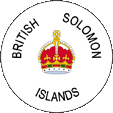 |
1906–1947, Abzeichen des Britischen Solomon Islands Protectorate – badge of the British Solomon Islands Protectorate Quelle/Source, nach/by: Flags of the World, Flaggenbuch 1939 |
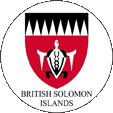 |
1947–1956, Abzeichen des Britischen Solomon Islands Protectorate – badge of the British Solomon Islands Protectorate Quelle/Source, nach/by: Flags of the World |
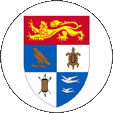 |
1956–1966, Abzeichen des Britischen Solomon Islands Protectorate – badge of the British Solomon Islands Protectorate Quelle/Source, nach/by: Flags of the World |
 |
1966–1977, Abzeichen des Britischen Solomon Islands Protectorate – badge of the British Solomon Islands Protectorate Quelle/Source, nach/by: Wikipedia (EN), Flags of the World |
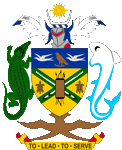 |
seit/since 1978, Wappen der Salomonen – coat of arms of the Solomon Islands Quelle/Source: Corel Draw 4 |
| Das Staatswappen der Salomonen wurde anlässlich der Unabhängigkeit am 07.07.1978 angenommen. Die Farben des Wappens erscheinen auch in der Nationalflagge. Es zeigt einen gelben Schild mit einem blauen Schildhaupt. Darin zwei Fregattvögel (Ostdistrikt) und ein Adler (Malaita). In dem gelben Feld ein grünes Diagonalkreuz, welches mit Pfeilen belegt ist. Links und rechts je eine Schildkröte (Westdistrikt), in der Mitte ein Schild mit Bogen, Pfeilen und Speeren (Zentraldistrikt). Als Schildhalter dienen ein Krokodil und ein Hai. Oberhalb ein Helm, darauf ein Eingeborenenboot und eine aufgehende Sonne. Unterhalb des Schildes ein Spruchband mit dem Motto des Landes: "To lead is to serve" → "Führen heißt Dienen". | The coat
of arms of the Solomons was adoped on the occasion of the independence on
7th of July in 1978. The colours of the coat of arms appear in the national
flag too. It shows an yellow shield with a blue head of the shield. In it
two frigate birds (Eastern District) and an eagle (Malaita). In the yellow
field a green diagonal cross on which arrows are placed. To the left and on the right ever one turtle (Western District), in the middle a shield with bow, arrows and spears (Central District). As shield supporters serve a crocodile and a shark. Above a helmet, on it a boat of the natives and a rising sun. Below the shield a banner with the motto of the country: "To lead is to serve". |
| Quelle/Source: Flaggen Wappen Hymnen | |
Landkarte – Map: |
Lage – Position: |
Landkarte des Landes – Map of the Country: |
|
|
| Zahlen und Fakten – Numbers and Facts: | |
|
|
|
|
|
|
|
|
|
|
|
|
|
|
|
|
|
|
| ca. 1000
B.C. · erste Besiedlung, von Neuguinea ausgehend 1568 · der spanische Seefahrer Alvaro Mendaña de Neyra entdeckt die Salomonen, jedoch werden sie auf den Seekarten falsch eingetragen, und können nicht mehr wiedergefunden werden 1767 · der britische Seefahrer Philip Carteret entdeckt die Salomonen erneut 1768 · der französische Seefahrer und Forscher Louis Antoine de Bougainville erreicht die Inseln auf seiner Weltumseglung 1883 · Großbritannien besetzt die südlichen Salomoneninseln (Neu Georgia, Guadalcanal, Malaita, San, Cristobal-Inseln) 1885 · das Deutsche Reich nimmt die nördlichen Salomoneninseln in Besitz (Buka, Bougainville, Choiseul, Santa Isabel, Ontong-Java-Inseln) 1893 · Großbritannien errichtet sein Protektorat über die Salomonen-Inseln, das "British Solomon Islands Protectorate", die Inseln werden ein Teil der Britischen Westpazifischen Territorien und dem Western Pacific High Commissioner unterstellt 1898 · Großbritannien annektiert die Santa-Cruz-Inseln, Bellona-Inseln und die Insel Rennell (Östliche Äußere Inseln) 1900 · das Deutsche Reich tritt die nördlichen Salomoneninseln an Großbritannien ab (Choiseul, Santa Isabel, Shortland, Ontong-Java-Inseln) 1942 · Eroberung durch japanische Truppen im Zweiten Weltkrieg (Buka, Bougainville, Shortland, Choiseul, Neu Georgia, Santa Isabel, Russell-Inseln, Guadalcanal), einige Inseln bleiben in britischer Hand (Rennell-Inseln, San Christobal, Malaita, Santa Cruz, Bellona-Inseln) 1943 · Rückeroberung durch alliierte Truppen 05.09.1945 · die letzten japanischen Truppen kapitulieren 1960 · die Salomonen-Inseln erhalten eine eigene Verwaltung Juli 1971 · die Salomonen erhalten einen eigenen Gouverneur 28.08.1973 · Großbritannien gewährt eingeschränkte Autonomie 22.06.1975 · das "British Solomon Islands Protectorate" wird offiziell in "Solomon Islands Protectorate" umbenannt 02.01.1976 · Großbritannien gewährt volle innere Autonomie 07.07.1978 · die Salomonen werden im Rahmen des Commonwealth of Nations unabhängig 1980 · erste Parlamentswahlen 1988 · eine Kommission empfiehlt in Folge von Auseinandersetzungen zwischen den einzelnen Inseln und Inselgruppen der Salomonen die Umwandlung des Staats in eine föderale Republik 1992 · Auseinandersetzungen zwischen den Salomonen und Papua-Neuguinea 1998–2003 · Putschversuch, Bürgerkrieg 2003 · Truppen aus Australien werden werden zu Hilfe gerufen und befrieden das Land 2017 · die australischen Truppen verlassen das Land November 2021 · nach der im Jahre 2019 von der Regierung des Landes verkündeten diplomatischen Trennung des Landes von Taiwan (Republik China) und Aufnahme diplomatischer Beziehungen zur Volksrepublik China erschüttern anti-chinesische Unruhen das Land, Truppen aus Australien und Fidschi versuchen die öffentliche Ordnung wieder herzustellen |
| ca. 1000
B.C. · first settlement, coming from New Guinea 1568 · the Spanish seafarer Álvaro de Mendaña y Neyra discoveres the Solomons but they become wrongly registered in the nautical charts and it is not possible to find them again 1767 · the British seafarer Philip Carteret discoveres the Solomons again 1768 · the French seafarer and explorer Louis Antoine de Bougainville reaches the islands during his sailing journey round the world 1883 · United Kingdom occupies the southern Solomon Islands (New Georgia, Guadalcanal, Malaita, San Cristobal Islands) 1885 · the German Empire appropriates the Northern Solomon Islands (Buka, Bougainville, Choiseul, Santa Isabel, Ontong Java Islands) 1893 · United Kingdom establishes its protectorate over the Solomon Islands, the "British Solomon Islands Protectorate", the islands become a part of the British Western Pacific Territories and become subordinated the Western Pacific High Commissioner 1898 · United Kingdom annexes the Santa Cruz Islands, Bellona Islands and Rennell Island (Eastem Outer Islands) 1900 · the German Empire cedes the Northern Solomon Islands to United Kingdom (Choiseul, Santa Isabel, Shortland, Ontong Java Islands) 1942 · conquest by Japanese troops in the Second World War (Buka, Bougainville, Shortland, Choiseul, New Georgia, Santa Isabel, Russell Islands, Guadalcanal), some islands remain in the hands of United Kingdom (Rennell Islands, San Christobal, Malaita, Santa Cruz, Bellona Islands) 1943 · re-conquest by allied troops 5th of September 1945 · the last Japanese troops surrender 1960 · the Solomon Islands get an own administration July 1971 · the Solomons get their own governor 28th of August 1973 · United Kingdom grants limited autonomy 22nd of June 1975 · the "British Solomon Islands Protectorate" become officially renamed in "Solomon Islands Protectorate" 2nd of January 1976 · United Kingdom grants full interior autonomy 7th of July 1978 · independence for the Solomons in the framework of the Commonwealth of Nations 1980 · first elections for a parliament 1988 · a commission recommends the transformation of the state in a federal republic as a result of quarrels between the particular islands and archipelagos of the Solomons 1992 · quarrels between the Solomons and Papua New Guinea 1998–2003 · attempted coup d’état, civil war 2003 · troops from Australia are called in to help and pacify the country 2017 · the Australian troops leave the country November 2021 · after the diplomatic break of the country with Taiwan (Republic of China) announced by the country's government in 2019 and the establishment of diplomatic relations with the People's Republic of China, anti-Chinese unrest is shaking the country, troops from Australia and Fiji try to restore public order |
| Quelle/Source: Atlas zur Geschichte, World Statesmen, Wikipedia (EN), Volker Preuß |
| Der Entdecker der Inseln – der spanische Seefahrer Alvaro de Mendaña de Neyra – benannte die Inselgruppe nach dem sagenhaften israelischen König Salomo, weil er glaubte die legendären Goldinseln des Königs Salomo gefunden zu haben und vermutete große Mengen Gold auf ihnen. | The discoverer of the islands – the Spanish navigator Alvaro de Mendaña de Neyra – named the archipelago after the legendary Israeli King Solomon because he believed he had found the legendary gold islands of King Solomon and suspected large quantities of gold on them. |
| Quelle/Source: Handbuch der geographischen Namen | |